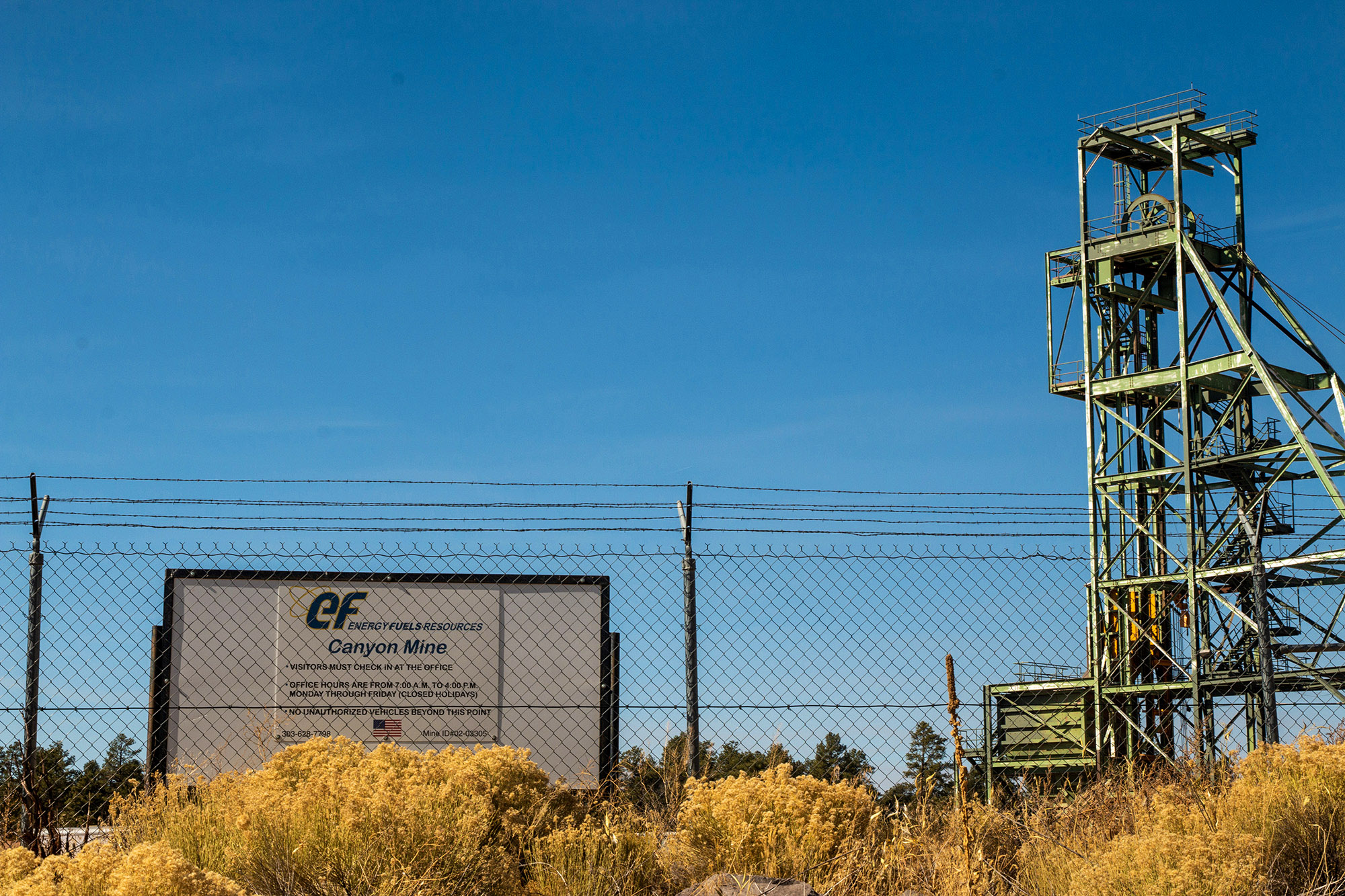Indianz.Com > News > Cronkite News: Court sides with company in dispute over Grand Canyon uranium mine
Uranium mine near Grand Canyon permitted by court, despite mining ban
Thursday, February 24, 2022
Cronkite News
WASHINGTON, D.C. — A federal court ruled Tuesday that a uranium mine near the Grand Canyon can operate, even though it sits on 1 million acres that the federal government has declared off-limits to new mining.
A three-judge panel of the 9th U.S. Circuit Court of Appeals rejected claims by tribal and environmental groups that the U.S. Forest Service erred when it reviewed the mine owner’s rights to operate the Pinyon Plain Mine, by improperly calculating its potential profitability.
The permit for the mine, formerly known as the Canyon Mine, was first issued in 1986, meaning it was grandfathered in when the mining moratorium near the canyon was imposed in 2012. But operations have been largely stalled for decades by a depressed uranium market.

This is the second time the circuit court has considered Grand Canyon Trust v. Provencio, and at least the third ruling it has issued on this particular mine, going all the way back to the 1980s when the project was first proposed. The Forest Service first approved a plan of operations for what was then the Canyon Mine in 1986, sparking a legal challenge by the Havasupai Tribe. But courts upheld the approval for the mine, and its owner at the time, Energy Fuels Nuclear Inc., began to build surface structures and sink what was to be a 1,400-foot mine shaft. By 1992, however, falling uranium prices drove the company to suspend operations with just 50 feet of mine shaft drilled.The Grand Canyon is too precious to mine. It's time to ban new uranium mines around the Grand Canyon, forever. Please take 2 minutes to ask your senators to support Senate bill 387, The Grand Canyon Protection Act.
— Grand Canyon Trust (@GrandCanynTrust) February 22, 2022
📷: Ed Moss

Note: This story originally appeared on Cronkite News. It is published via a Creative Commons license. Cronkite News is produced by the Walter Cronkite School of Journalism and Mass Communication at Arizona State University.
Search
Filed Under
Tags
More Headlines
Peoples World: Indigenous Peoples Coalition secures name change for historic park
Arizona Mirror: Lawsuit filed over sober living home scam targeting Native people
Cronkite News: ‘Navajos 4 Trump’ traveled to nation’s capital for inaugural parade
NAFOA: 5 Things You Need to Know this Week (January 21, 2025)
Native America Calling: ‘It’s finally over – I’m going home’
‘Our hearts are full’: Native Organizers Alliance welcomes commutation of sentence for Leonard Peltier
‘I am beyond words’: Deb Haaland welcomes clemency for Leonard Peltier
NDN Collective welcomes grant of executive clemency for Leonard Peltier
Executive Grant of Clemency: Leonard Peltier
VIDEO: Navajo Nation President Buu Nygren #DC #HonorTheTreaties
VIDEO: Navajo Nation Council Speaker Crystalyne Curley #DC #HonorTheTreaties
‘A lot of big plans’: Tribal leaders ready to get to work with new presidential administration
Chuck Hoskin: Cherokee Nation empowers culture of entrepreneurship
Native America Calling: Accounting for those who never made it home from Indian Boarding Schools
U.S. Supreme Court upholds federal law banning TikTok
More Headlines
Arizona Mirror: Lawsuit filed over sober living home scam targeting Native people
Cronkite News: ‘Navajos 4 Trump’ traveled to nation’s capital for inaugural parade
NAFOA: 5 Things You Need to Know this Week (January 21, 2025)
Native America Calling: ‘It’s finally over – I’m going home’
‘Our hearts are full’: Native Organizers Alliance welcomes commutation of sentence for Leonard Peltier
‘I am beyond words’: Deb Haaland welcomes clemency for Leonard Peltier
NDN Collective welcomes grant of executive clemency for Leonard Peltier
Executive Grant of Clemency: Leonard Peltier
VIDEO: Navajo Nation President Buu Nygren #DC #HonorTheTreaties
VIDEO: Navajo Nation Council Speaker Crystalyne Curley #DC #HonorTheTreaties
‘A lot of big plans’: Tribal leaders ready to get to work with new presidential administration
Chuck Hoskin: Cherokee Nation empowers culture of entrepreneurship
Native America Calling: Accounting for those who never made it home from Indian Boarding Schools
U.S. Supreme Court upholds federal law banning TikTok
More Headlines